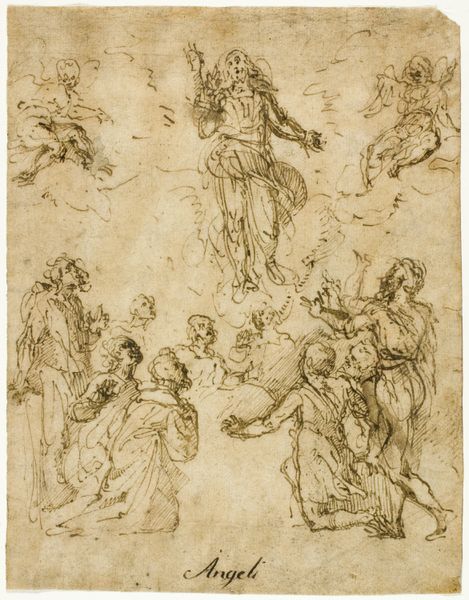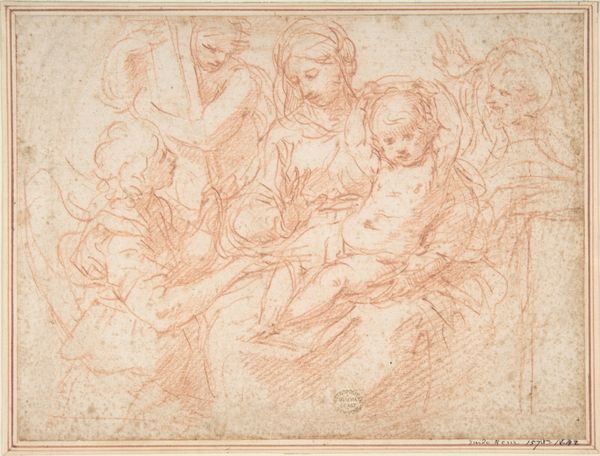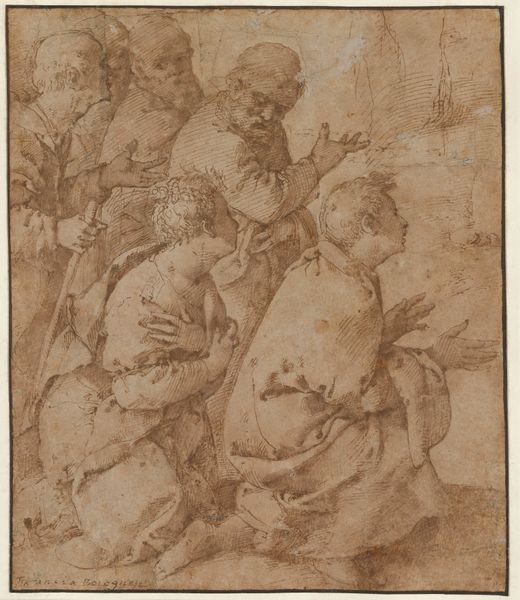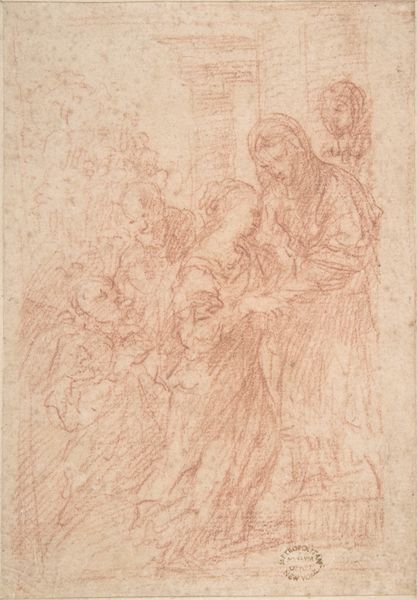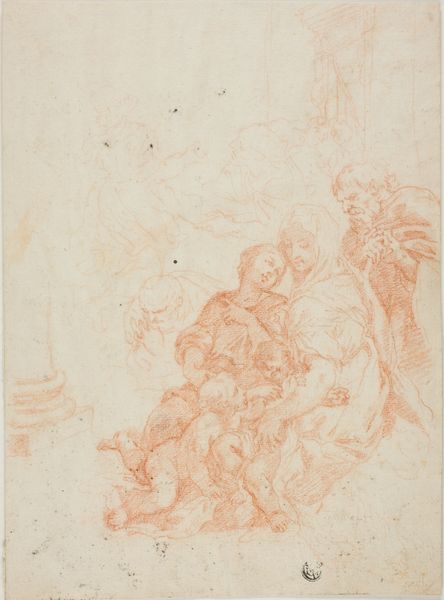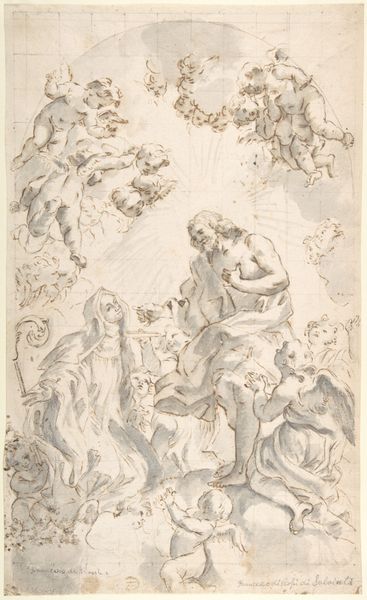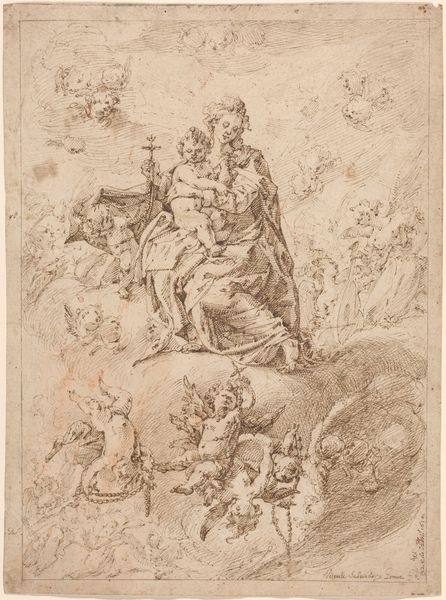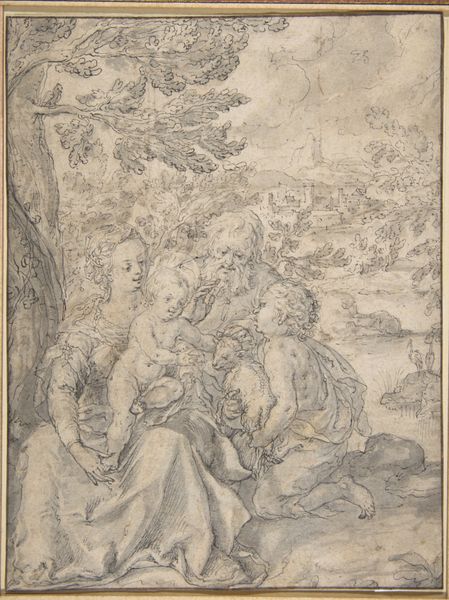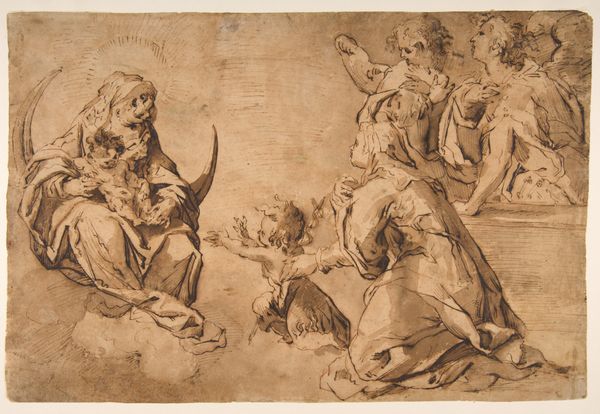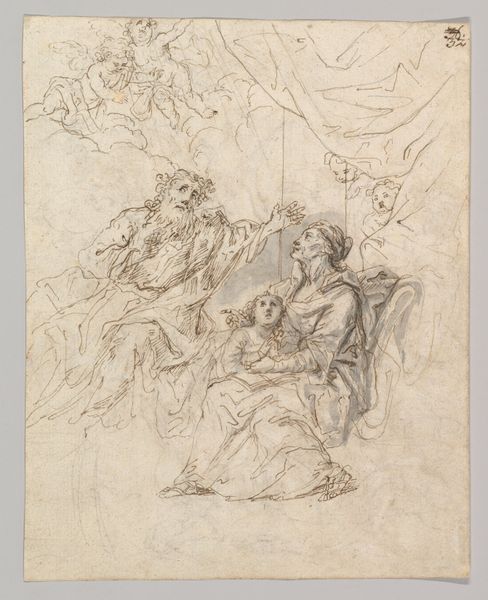
Madonna and Child with Angels Playing Lute and Viola da Braccio 1600 - 1700
0:00
0:00
drawing, print
#
drawing
# print
#
figuration
#
madonna
#
child
#
italian-renaissance
#
watercolor
#
angel
Dimensions: 8-9/16 x 6-3/4 in. (21.8 x 17.2 cm)
Copyright: Public Domain
Curator: I find this wash drawing quite captivating, despite its preliminary nature. It’s titled “Madonna and Child with Angels Playing Lute and Viola da Braccio” and thought to be from the 17th century, possibly from an artist working in the Italian Renaissance tradition. Editor: My initial impression is one of ethereal lightness, even fragility. The monochrome palette creates a dreamy, otherworldly atmosphere. It feels devotional but also surprisingly intimate. Curator: Consider the artistic process here. The monochrome wash, a kind of diluted ink or watercolor, allowed for swift execution and easy corrections. This suggests it may be a preparatory study, perhaps for a larger painting or even a print. Editor: Look at how the arrangement itself speaks volumes. The Madonna, positioned centrally, becomes the heart of compassion, subtly echoed in the gentle gestures of the surrounding angels. It really anchors the symbolic message. Curator: Exactly. Note the instrumentation: the lute and the viola da braccio were instruments strongly linked to sacred music during this era. One can also infer an association between artisanal workshops of the time and the commission or sale of sacred themed works for devotion in affluent homes. Editor: The angels themselves contribute to the overall mood, with the circle of cherubic faces overhead creating an emblem of heavenly glory surrounding the Virgin. It reflects not just religious, but also cultural values related to family and the role of mother figures. Curator: Absolutely. There's a clear hierarchy represented through material. While artists or workshop employees produced similar pieces en masse, a private patron could acquire objects imbued with religious and cultural significance, thereby acquiring elevated social and spiritual capital through its ownership and display. Editor: So, you’re pointing to both spiritual fulfillment and the pursuit of status in devotional display? A sort of transaction of belief through crafted imagery? I appreciate how both interpretations can enrich our understanding. Curator: Precisely. By understanding production practices, we can reveal social and cultural layers embedded within what at first appears simply as a traditional devotional image. Editor: Seeing this now, it's more than a sentimental representation; it becomes an echo chamber of cultural values, delicately rendered on paper. Curator: Agreed. It gives new dimension to my understanding.
Comments
No comments
Be the first to comment and join the conversation on the ultimate creative platform.


